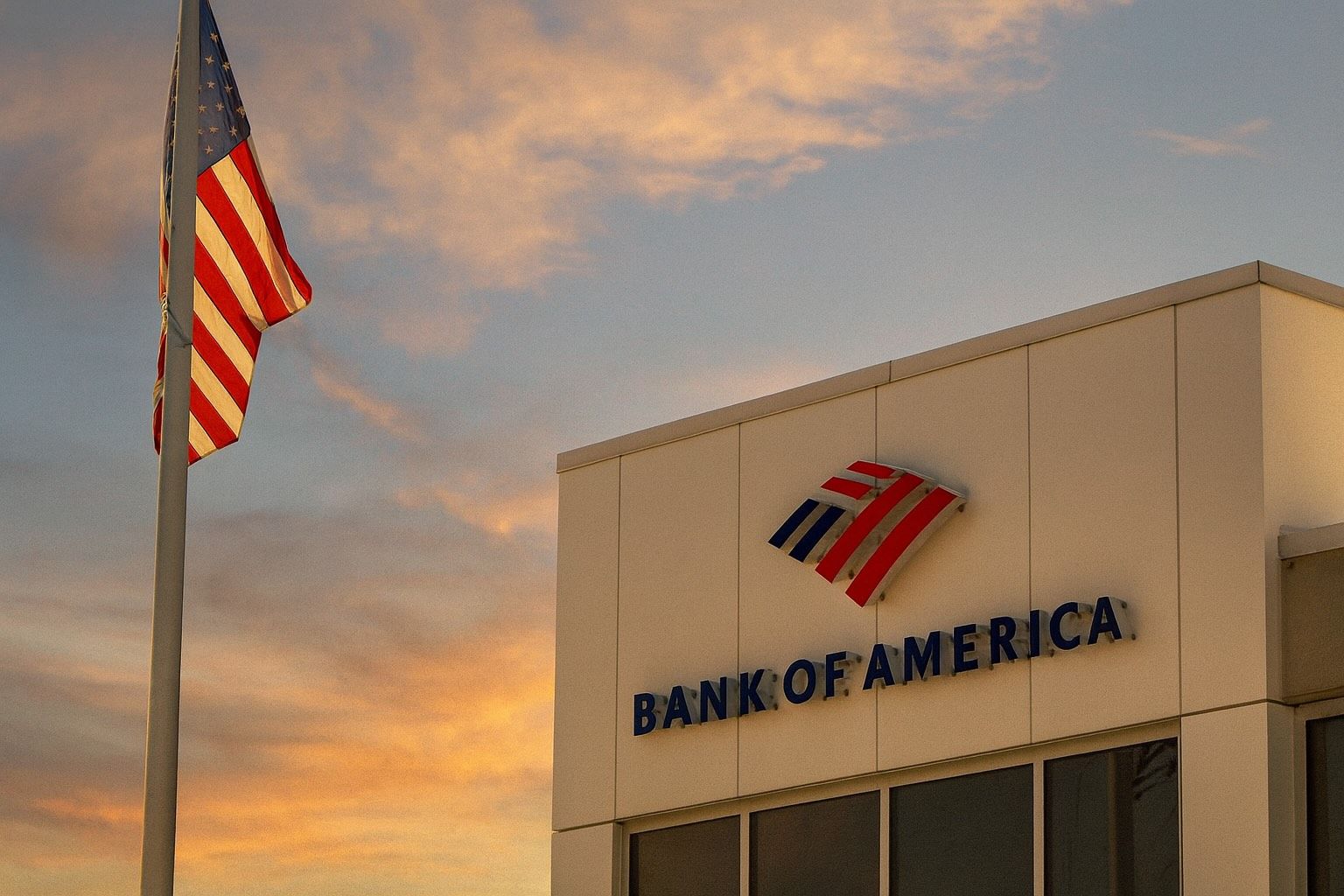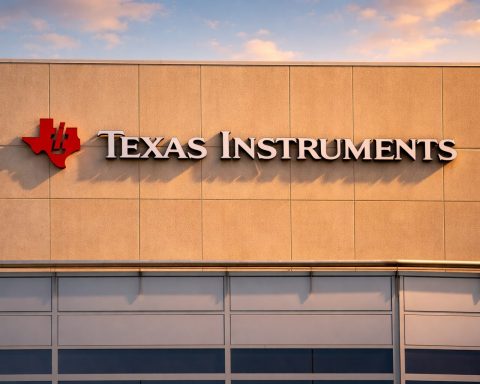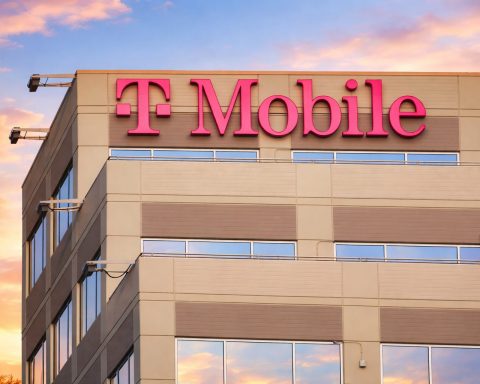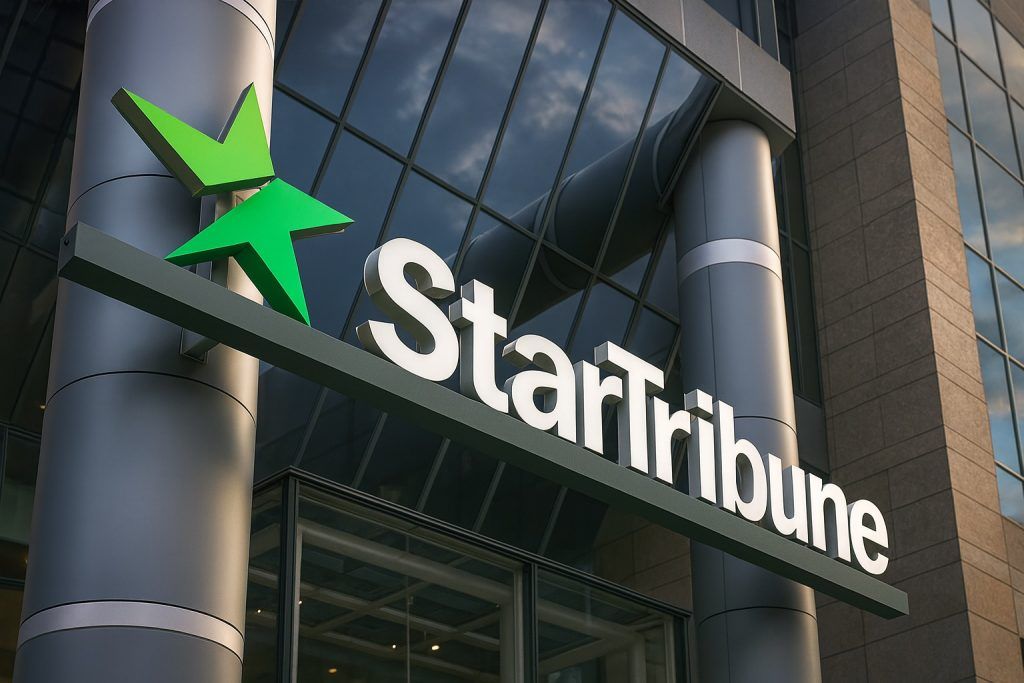- Price: BAC closed around $51.10 on Oct. 22 (down ~0.8% on the day) [1]. The stock is roughly 14–15% higher year-to-date, having traded just under its two-year high (~$52.90) [2] [3].
- Earnings: In mid-October BofA reported a blowout Q3 2025 (Sep‐ended) quarter: net income of $8.5 billion ($1.06/share), up 31% year-over-year and well above the $0.95 consensus [4] [5]. Revenue rose ~11% to $28.1 billion, driven by record net interest income (NII) of ~$15.2 billion (+9% YoY) and surge in investment banking fees [6] [7]. Management called it a “well-rounded beat,” citing strong loan/deposit growth and record NII [8].
- Outlook: BofA raised its Q4 NII forecast to $15.6–15.7 billion (≈+8% YoY) [9] despite the Fed’s September rate cut. CEO Moynihan and CFO Borthwick note the healthy economy – “unemployment…at a pretty low level, wage growth…pretty good…home prices…good…stock market…in a good place” – is sustaining loan demand [10]. The bank also passed the Fed stress test, lifted its dividend 8% (to $0.28, ~2.2% yield) and announced a $40 billion buyback [11], returning ~$7.4 billion to shareholders in Q3.
- Analyst Sentiment: Wall Street is bullish on BAC. Market data show 21 analysts rate it a Buy (5 Holds, 0 Sells) with a consensus price target around $56–57 (~+12% upside) [12]. Banks have lifted their targets after the quarter: Morgan Stanley to $67, Barclays to $59, Evercore to $57, and Citi to $62 [13]. Legendary investor Warren Buffett (Berkshire) remains the largest BofA holder (~8% stake), though he sold about 10% of his shares this year, which some interpret as profit-taking [14].
- Macro & Industry: BofA’s fortunes are tied to the economy and rates. The Fed cut its funds rate by 25 bps in September and is widely expected to cut another 25 bps at the Oct. 28–29 meeting [15]. Lower rates could buoy loan growth but may start to squeeze future lending margins. So far, the high-rate environment boosted BofA’s NII to records, but economists warn inflation is above target and data is murky due to a U.S. government shutdown [16] [17]. Credit trends also warrant watching; big banks (including BofA) are generally reporting stable credit quality, but recent loan losses at regional banks have put investors on alert [18] [19].
- Peers & Trends: BofA is one of the largest diversified banks. It has lagged peers so far in 2025 – JPMorgan and Citigroup are up ~19% and 17% YTD, vs. BofA ~14% [20] – but the Q3 rally has closed that gap. Its balanced business (consumer banking to markets) shone; notably, IB fees jumped 43% to $2.0 billion [21], outpacing many peers and signaling strength in the deal pipeline. The bank’s 50-day and 200-day moving averages remain intact, suggesting the longer-term uptrend is still in place [22]. Valuation is still modest – trading at about 1.3× book and ~9–10× forward earnings [23] – and with a dividend yield (~2.2%) and huge buyback in play, many analysts argue BofA shares offer attractive risk/reward [24].
Stock Price Performance & Recent Volatility
BAC’s price jumped after earnings and then swung around. On the Oct. 15 earnings day it closed at $52.28 (up ~4.4%) [25], briefly touching a two-year high near $52.85. The very next day Oct. 16 it plunged ~3.5% to $50.44 [26], effectively erasing the initial gains. By midday Oct. 17, the stock was about 1–2% lower on the day around ~$50 [27], reflecting a rotation after the earnings excitement. In the days since, BAC has rebounded; it closed Oct. 21 at $51.52 and Oct. 22 at $51.10 [28]. Overall, BAC is up ~14–15% in 2025 [29] and is trading just a few dollars shy of its 52-week high (~$52.88 [30]), indicating it has largely recouped earlier losses from market swings. Trading volume has been robust (often tens of millions of shares daily), and the stock is holding above key trendlines (50-day and 200-day averages) [31].
Market context has played a role. BofA’s earnings news on Oct. 15 was part of a broader rally in big banks – JPMorgan also beat and rallied, and even regional banks showed pockets of strength. However, by late Oct. 16 the mood turned cautious after two smaller banks disclosed surprise loan losses [32]. BAC participated in this sector pullback: it slid roughly 1–2% on Oct. 17 alongside other banks [33]. Still, the overall uptrend has held, and BofA’s share price is now only about 4% below its 52-week high [34]. This resilience suggests investors see the stock’s recent strength as more than a one-time spike.
Q3 Earnings & Financial Highlights
Bank of America’s third-quarter 2025 results far exceeded forecasts, powering the recent stock rally. The bank reported net income of $8.5 billion (earnings per share $1.06) for Q3, vs. $6.9 billion ($0.81/share) a year earlier [35]. This topped the Street’s ~$0.95 estimate comfortably. Total revenue was $28.1 billion, roughly +11% year-over-year [36]. A record net interest income of about $15.2 billion (up 9% YoY) was the headline driver; CEO Brian Moynihan noted “strong loan and deposit growth… resulted in record net interest income” [37]. In plain terms, BofA’s core lending operations – benefitting from high interest rates – are producing more profit than ever.
Crucially, investment banking and markets also outperformed. BofA’s IB fees surged 43% year-over-year to roughly $2.0 billion [38], far above management’s prior 10–15% growth forecast. This reflected a pickup in M&A and capital markets activity (the global deal pipeline hit a two-year high in Q3 [39]). Trading and wealth management revenues were solid as well. Overall, every major division of BofA contributed: consumer banking (loans, cards) grew, wealth/asset management saw higher fees, and corporate/business banking delivered stronger results. The bank even released $300 million in loan-loss reserves (provisions of $1.3B vs $1.6B last quarter), signaling confidence in credit quality [40].
Management’s commentary was upbeat. CFO Alastair Borthwick told analysts that healthy economic conditions are underpinning growth: “Unemployment still remains at a pretty low level, wage growth is pretty good overall, home prices remain in a good place, and… the stock market’s in a good place” – all of which help drive loan demand [41]. With consumer spending stable and corporate borrowing picking up, BofA raised its outlook: it now expects Q4 net interest income of $15.6–15.7 billion (about +8% YoY) [42] despite September’s Fed rate cut. Even Fed Chair Jerome Powell’s comments about the economy (“reasonably healthy,” another 25 bp cut coming) have not dimmed BofA’s confidence.
Analysts and Expert Commentary
Analysts reacted mostly positively to the quarter, though some caution lingers on macro risks. Market data show 21 analysts have a “Buy” rating on BAC versus 5 “Holds” and no outright “Sell” opinions [43]. After the earnings, many firms raised targets: for example, Morgan Stanley upped its BAC target to $67, Barclays to $59, Evercore to $57, and even Citi (typically more conservative) to $62, each citing BofA’s stronger-than-expected earnings trajectory [44]. The consensus price target now sits around $56–57, roughly 12% above late-October levels [45].
Wall Street strategists praised the results. Aptus Capital’s David Wagner called it “just a well-rounded beat,” noting that Bank of America’s stock is now “catching up to some of the other larger-cap peers” on a year-to-date basis [46]. Wagner specifically lauded CEO Moynihan’s ability to capture consumer trends early, saying BofA has become a “north star” for understanding shifts in spending and borrowing [47]. KPMG banking lead Peter Torrente observed that banks overall are staying “on an even keel” amid volatility, thanks to higher deal activity and a clearer Fed outlook – but he warned that “continuous vigilance” on interest rates and consumer credit health “remains crucial as banks head into the final months of the year” [48]. In other words, most analysts believe BofA’s momentum is durable, but they acknowledge risks from future Fed moves or an economic downturn.
Legendary investor Warren Buffett (who owns an ~8% stake via Berkshire Hathaway) remains bullish on the bank’s franchise, but he trimmed about 10% of his shares earlier this year [49]. Some market watchers interpret this simply as smart profit-taking, while others see it as a mild signal to “proceed with caution” after BofA’s strong run [50]. In sum, expert commentary is broadly optimistic: BofA’s current valuation (around 9–10× next-year earnings, 1.3× book) is seen as reasonable, especially given its growing returns, and many analysts emphasize that strong capital returns (dividends + buybacks) could further boost investor returns [51].
Comparison with Peers and Sector Trends
Bank of America sits in the “big bank” peer group, and recent results show it’s catching up with rivals after lagging early in 2025. Through mid-October, BAC’s stock was up ~14% for the year, slightly behind the KBW Bank Index and peers like JPMorgan (+19% YTD) and Citigroup (+17% YTD) [52]. The late-quarter rally helped close much of that gap. For instance, BofA’s post-earnings jump briefly put its shares near the highest price of the past two years [53].
All major U.S. banks saw tailwinds in 2025 from a healthy economy. JPMorgan also reported a record quarter, driven by Wall Street trading and steady retail banking; Wells Fargo showed loan growth and reduced credit reserves; and Citigroup enjoyed strong investment banking and wealth fees. What stands out for BofA is its balanced performance. Its 43% surge in IB fees outpaced some banks traditionally seen as more deal-oriented – a notable achievement for BofA’s historically retail-heavy profile [54]. Meanwhile, metrics like return on equity (RoE) and efficiency are improving: BofA’s Q3 return on tangible common equity was ~15.4%, approaching JPMorgan’s levels [55], and its efficiency ratio has fallen below 62%.
This indicates BofA is narrowing fundamental gaps with big peers. It also benefits from its massive deposit base (~$2 trillion) and broad lending franchise in an era of high rates: every percentage point of rate increase generates about $2 billion more NII at BofA. Now, as rates appear to peak, the question is whether BofA can offset any margin pressure with loan growth and fee businesses. Its guidance still calls for ~8% NII growth in Q4 [56], suggesting confidence it can navigate the shift as well as (or better than) rivals. On valuation, BofA still trades at a modest discount to JPMorgan (which commands higher earnings multiples), reflecting JPM’s stronger margins. Bulls argue BofA’s improving returns justify narrowing that gap. With a ~2.2% dividend yield and massive buybacks underway, many investors expect BofA to deliver shareholder returns comparable to or above its peers if earnings continue to rise [57].
Economic and Policy Backdrop
The broader U.S. economy and Fed policy are key influences on BAC. Fed officials have signaled that U.S. growth remains “reasonably healthy,” but they face a data vacuum due to an ongoing federal government shutdown. Despite missing recent employment reports, markets expect the Fed to cut its benchmark rate by 25 basis points (to ~3.75–4.00%) at the Oct. 28–29 meeting [58]. These anticipated rate cuts have two opposing effects on banks: they may eventually compress lending spreads, but in the near term they tend to stimulate loan demand. BofA’s management believes the robust economy (low unemployment, rising wages, solid housing, strong markets) will keep loan growth strong even as rates ease [59].
Inflation remains above the Fed’s 2% target, so officials are divided on how fast to ease policy [60]. Any surprise if inflation remains sticky could delay cuts and prolong high-rate tailwinds for banks. Conversely, a rapid slowdown or recession could increase loan defaults. For now, BofA’s credit books look healthy: it reduced its credit loss reserves in Q3 (implying stable loans) [61], unlike some peers that have begun to build reserves. Regulatory policy is also evolving. The current U.S. administration appears set on easing some bank capital rules – for example, plans to shrink certain leverage constraints and reduce surcharges on large global banks [62]. BofA cleared the latest stress tests with flying colors (achieving an 11.6% common equity Tier 1 ratio) and has expressed support for clearer, more permanent rules. CEO Moynihan has publicly urged that any new regulations be “baked in” through formal rulemaking so they aren’t subject to frequent swings [63]. In sum, the regulatory outlook is tilting friendlier for large banks, which could benefit BofA’s capital planning and strategy.
On the consumer front, BofA’s retail division is influenced by spending trends. Credit/debit card spending and mortgage/refinance activity remained robust in Q3, partly reflecting lower credit card balances and high home prices. However, if consumer incomes or asset prices weaken, it could slow loan growth. Notably, BofA is well-positioned: it has one of the largest deposit franchises in the country and a heavy presence in fee businesses (wealth management, trading) that are less tied to consumer credit. These factors provide some diversification against regional-bank-like credit shocks.
Technology, Digital Banking and AI Investments
Beyond finance, Bank of America has been aggressively investing in technology and innovation, trends that analysts say can boost its efficiency and growth. The bank boasts 49 million active digital banking users (about 79% of its retail households) [64], and it is rolling out new tools to deepen customer engagement. For example, in September BofA launched “AskGPS,” a generative-AI assistant for its CashPro transaction banking unit [65]. This tool lets corporate clients ask complex banking questions and get instant answers by scanning thousands of internal documents. Jarrett Bruhn, BofA’s AI lead for transaction banking, said the goal is to answer in seconds what once required hours of research or a call with a product expert [66]. Similarly, BofA has embedded AI assistants in its mobile app and wealth platforms to personalize services and streamline operations.
These tech initiatives have garnered industry recognition. BofA was named “North America’s Most Innovative Bank” in 2025 [67]. Executives argue that such innovation will drive future growth: streamlined operations could trim costs, while improved digital experiences help attract and retain customers. However, there is a near-term tradeoff: Moody’s analyst Allen Tischler noted that BofA’s heavy tech/A.I. spending has “boosted” its cost-to-income ratio (65% in June 2025 vs. 64% a year ago) [68]. In other words, the bank is deliberately running slightly higher expenses now in exchange for future gains in revenue and efficiency. Investors will be watching whether these investments pay off through faster growth or lower costs down the road.
Forward Outlook and Scenarios for Investors
Looking ahead, most analysts are constructive on BofA but highlight a few key scenarios. In the base case, the U.S. economy remains stable, the Fed gradually cuts rates, and BofA continues to grow loans and fees. Under this scenario, the bank should keep delivering steady earnings beats (similar to Q3) and further narrow the gap with peers. Rising core deposits and high-card spending would support consumer banking, while continued dealmaking and wealth activity bolster fees. The large share buyback and higher dividend would amplify EPS growth, potentially driving the stock into the mid-$50s or beyond – in line with many analysts’ targets (e.g. $56–62).
In a bullish case, the economy re-accelerates or inflation cools more than expected, allowing the Fed to cut rates aggressively. That could ignite even stronger loan growth (especially mortgages and business lending) and higher credit demand. If BofA continues to control costs and capture market share, its return on equity could climb further, justifying an even richer valuation. Some investors also point out that if bank stock valuations as a group expand (for example, due to regulatory relief [69]), BofA might benefit disproportionately given its improvements.
On the risk side, a sharper downturn or banking-specific crisis is the main concern. If credit delinquencies rise, BofA – despite a strong balance sheet – would need to increase provisions, which could cut net income. Weaker consumer spending or housing could slow its consumer finance business. In that case, analysts warn that the stock’s multi-year uptrend could stall or reverse. Fed policy is another wild card: if inflation stays stubbornly high and the Fed delays cuts, higher funding costs could erode net interest margins faster than projected. Indeed, KPMG’s Peter Torrente cautioned that banks must remain vigilant on loan quality and policy shifts “as we head into the final months of the year” [70].
In summary, Bank of America enters late 2025 in a strong position: its latest earnings confirmed the strength of its diversified model, and analysts generally favor the stock (with only 5 out of 26 giving it a Hold). The company’s emphasis on digital and AI, its robust capital returns, and the still-lofty yields on its deposits all argue that BofA can maintain its momentum. Still, investors will be watching incoming economic data and Fed signals closely. A steady economy and benign credit environment would likely keep BAC climbing; significant negative surprises could test the rally. As always, a balanced approach is key – many strategists suggest staying invested for growth potential, but monitoring bank fundamentals and macro indicators for warning signs.
Sources: BofA’s Q3 earnings reports and guidance [71] [72]; Reuters analysis and quotes [73] [74] [75]; TS2.Tech banking news summaries [76] [77] [78]; MarketBeat consensus data [79]; Investing.com analysis [80]; American Banker (AI and tech trends) [81]. All information is current as of Oct. 23, 2025.
References
1. www.investing.com, 2. www.reuters.com, 3. ts2.tech, 4. www.reuters.com, 5. ts2.tech, 6. www.reuters.com, 7. ts2.tech, 8. www.reuters.com, 9. www.reuters.com, 10. www.reuters.com, 11. ts2.tech, 12. ts2.tech, 13. ts2.tech, 14. ts2.tech, 15. www.reuters.com, 16. www.reuters.com, 17. www.reuters.com, 18. ts2.tech, 19. ts2.tech, 20. ts2.tech, 21. www.reuters.com, 22. ts2.tech, 23. ts2.tech, 24. ts2.tech, 25. www.investing.com, 26. www.investing.com, 27. ts2.tech, 28. www.investing.com, 29. www.reuters.com, 30. ts2.tech, 31. ts2.tech, 32. ts2.tech, 33. ts2.tech, 34. ts2.tech, 35. www.reuters.com, 36. www.reuters.com, 37. www.reuters.com, 38. www.reuters.com, 39. www.reuters.com, 40. www.reuters.com, 41. www.reuters.com, 42. www.reuters.com, 43. ts2.tech, 44. ts2.tech, 45. ts2.tech, 46. www.reuters.com, 47. www.reuters.com, 48. ts2.tech, 49. ts2.tech, 50. ts2.tech, 51. ts2.tech, 52. ts2.tech, 53. ts2.tech, 54. ts2.tech, 55. ts2.tech, 56. www.reuters.com, 57. ts2.tech, 58. www.reuters.com, 59. www.reuters.com, 60. www.reuters.com, 61. www.reuters.com, 62. www.reuters.com, 63. www.bankingdive.com, 64. www.investing.com, 65. www.americanbanker.com, 66. www.americanbanker.com, 67. www.investing.com, 68. www.americanbanker.com, 69. www.reuters.com, 70. ts2.tech, 71. www.reuters.com, 72. ts2.tech, 73. www.reuters.com, 74. www.reuters.com, 75. www.reuters.com, 76. ts2.tech, 77. ts2.tech, 78. ts2.tech, 79. ts2.tech, 80. www.investing.com, 81. www.americanbanker.com







